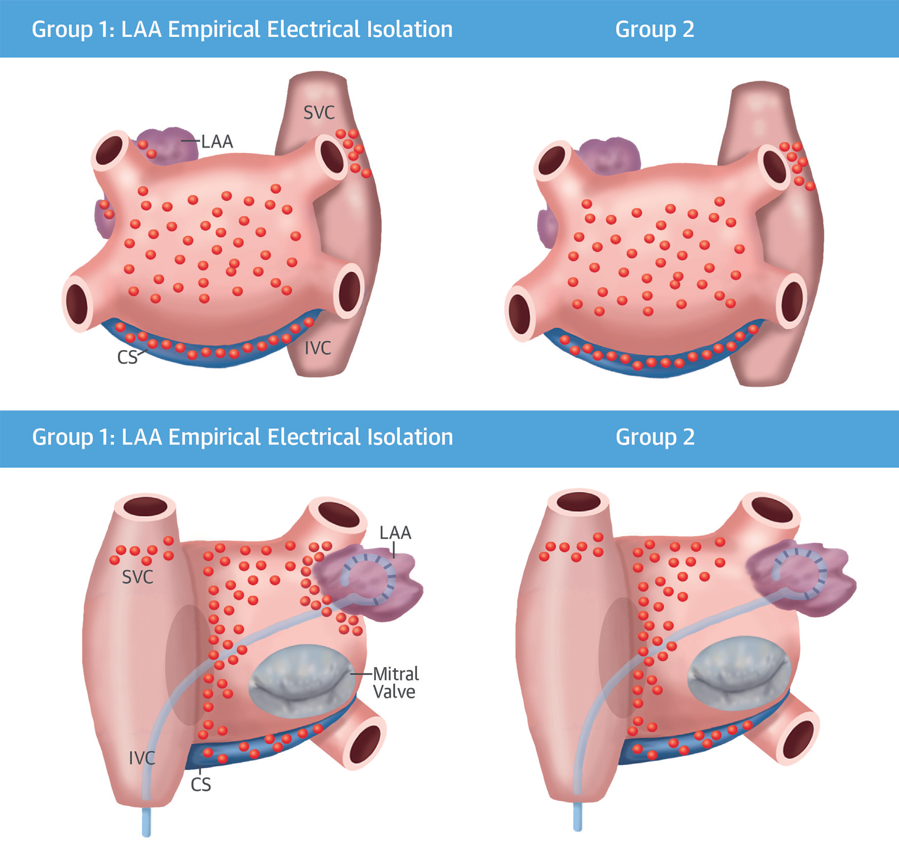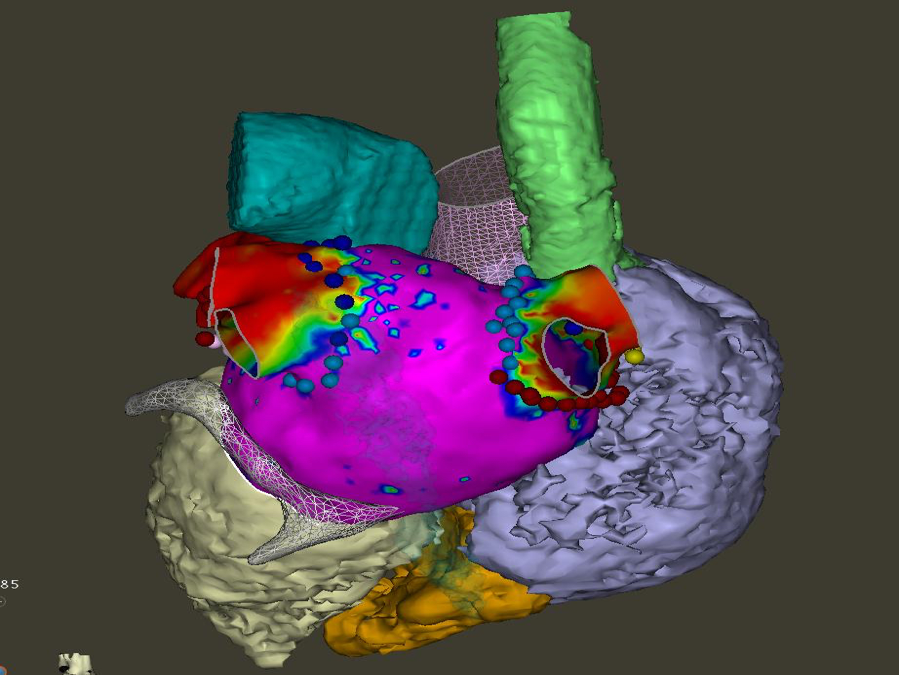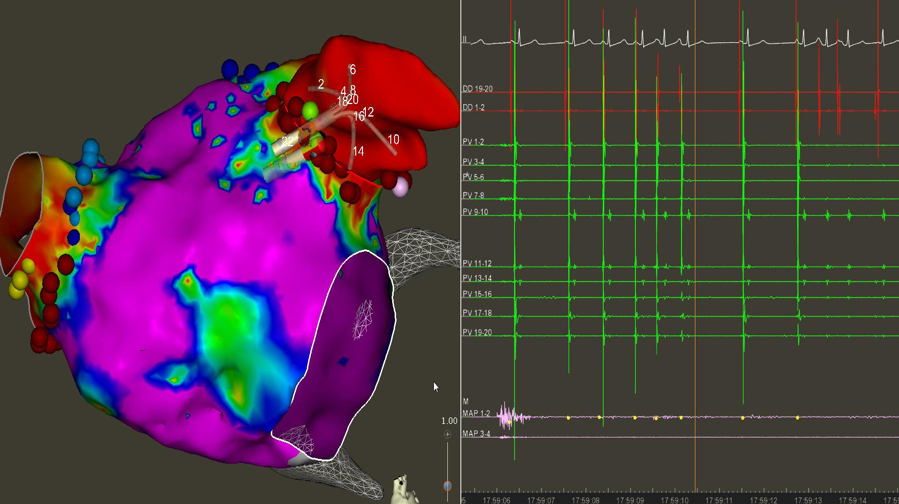The goals of treatment include preventing stroke, controlling heart rate, restoring a normal heart rhythm, as well as identifying and managing underlying causes. These treatable and reversible conditions include obesity, obstructive sleep apnea (OSA), hypertension, hypo- or hyperthyroidism, inflammatory and infectious diseases, as well as stress. Some patients require a procedural intervention to achieve control of their atrial fibrillation and its symptoms.
We perform extensive ablation of sites associated with triggers originating outside of the pulmonary veins such as the entire posterior wall, the roof, the anterior part of the left atrium, left atrial appendage (LAA), the coronary sinus, and the superior vena cava. Ablating these structures has shown to dramatically increase freedom from atrial fibrillation over the long term when combined with pulmonary vein isolation. The left atrial appendage deserves special attention when identifying and ablating patients with certain types of atrial fibrillation.
Our team of experts has made important contributions that have helped advance the field of catheter ablation. We recently published the results of the BELIEF Trial, which showed that after both a single and redo procedures in patients with persistent atrial fibrillation, empirical isolation of the left atrial appendage improved long-term freedom from atrial arrhythmias without increasing complications. As a result, we are among a select few centers in the world that are pioneers in this technique.


